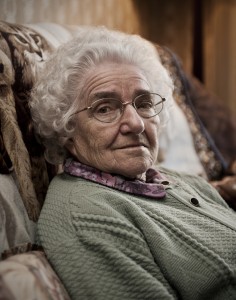Ed. note: In honor of my 10th anniversary in business, I am reposting some of the posts from my (now-defunct) Sage Enviro blog to make it easier for people to find them.
 Let’s suppose you were involved in an experiment to make sentences out of scrambled words. What if the list included a number of words that evoked stereotypes of elderly people? Words like Florida, lonely, worried, old, gray, forgetful, bingo and wrinkle.
Let’s suppose you were involved in an experiment to make sentences out of scrambled words. What if the list included a number of words that evoked stereotypes of elderly people? Words like Florida, lonely, worried, old, gray, forgetful, bingo and wrinkle.
I’m sorry to say that people who took part in this experiment walked more slowly afterwards than those who had neutral words on their list. The words had “primed” them to think about being old. It only takes a small stimulus to affect our behavior.
Another classic scrambled sentence experiment included words relating to rudeness or politeness. Those who were primed with polite words (like “respect” and “considerate”) as opposed to rude words (like “aggressively” and “intrude”) were the least likely to interrupt a subsequent conversation. (Thanks to Malcolm Gladwell’s book Blink for introducing me to both of these studies.)
Advertising is a powerful means to prime behavior. In one study, people who were exposed to food advertisements while watching television were more likely to eat more afterwards. They didn’t necessarily eat the food advertised, but they ate even if they weren’t hungry.
Brands also affect people’s behavior, according to an article in the Journal of Consumer Research. For example, people primed with Apple logos act more creative than those primed with IBM logos. Nike logos may make people more active and confident.
Another study found that if people were simply exposed to green products, without being asked to buy them, they were more likely to be altruistic. One more example of priming.
An article in Psychology Today described another experiment. This one started by giving people an essay to read that got them thinking (i.e., primed them) about status. The experimenters then gave them a list of hypothetical purchasing options for a car, soap and a dishwasher. The two products were equal in price and were from the same company. The non-green product was better in terms of luxury and performance, and the green version was better in terms of being eco-friendly. People in the status group were more likely to choose the green products than those in the control group.
Now it gets interesting. In the next experiment:
- Group one was asked to imagine that they were out shopping at a store.
- Group two was asked to imagine that they were shopping online by themselves at home.
Status falls out of the picture when the decision is private. When they imagined shopping at a store, twice as many in the status group chose green products as the control group. However, when they imagined shopping at home, half as many chose the green product.
One more thing about status priming. Without it, people liked the green products more when they were cheaper, and less when they were more expensive. It looks like the “rational consumer” played a role. However, when status concerns were primed, green products were more attractive precisely when they were said to be more expensive than standard products.
The researchers suggested that using status motives “may be an effective strategy for promoting proenvironmental or other types of prosocial behavior.” In other words, did the fact that George Clooney bought a $100,000 Tesla electric sports car make you want to own one too?
How can you use this if you want to promote environmental behavior? Status priming can increase people’s desire to buy green products. Maybe you need to invoke George Clooney and his sexy Hollywood friends. Maybe you need to make environmental products that are cool and remind people that they will be cool too if they buy them.